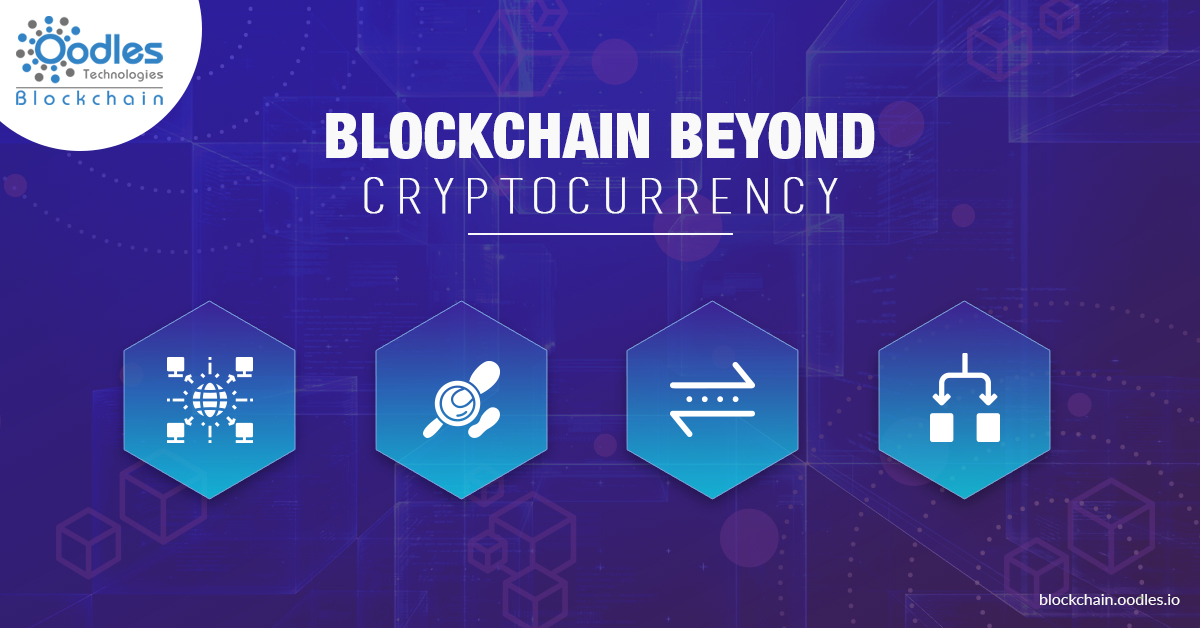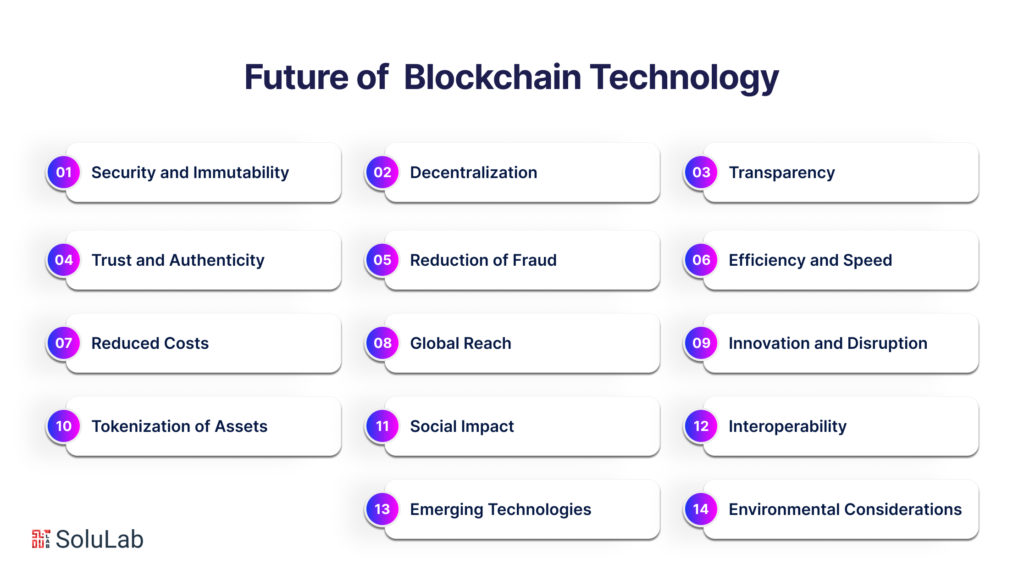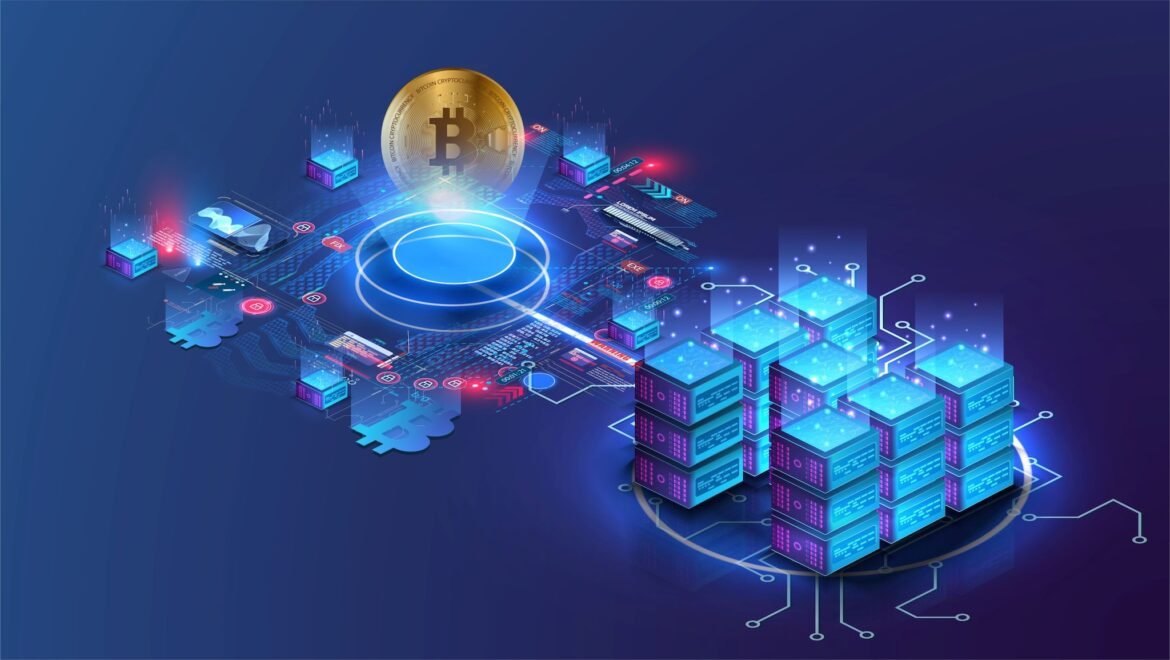
Introduction
Definition and Overview of Blockchain Technology
Blockchain technology is revolutionizing the way we think about data management and transactions. At its core, it is a decentralized digital ledger that securely records transactions across many computers, ensuring that the data cannot be altered retroactively. This structure not only promotes transparency but also enhances security, making it a vital tool in various fields beyond its initial application in cryptocurrency.
- Decentralized Nature: No single entity controls the blockchain.
- Immutable Records: Once data is recorded, it’s nearly impossible to alter it.
- Transparency: All transactions are visible to participants.
Evolution of Blockchain Beyond Cryptocurrency
While blockchain first gained recognition through Bitcoin, its potential extends far beyond cryptocurrency. Industries are increasingly exploring how blockchain can streamline processes, reduce costs, and increase trust.
For instance, in healthcare, blockchain can securely store patient records. In supply chain management, it enhances traceability of products. The versatility of blockchain is expanding its impact, signaling a move towards a more integrated future where this revolutionary technology stands at the forefront of various applications. The evolution of blockchain beyond cryptocurrency is not just a trend; it’s a transformative shift in how we interact with and trust technology.

Applications in Various Industries
Healthcare
The healthcare sector is redefining how patient information is stored and shared through blockchain technology. Imagine having a system where your medical records are not only secure but also easily accessible to authorized providers anytime, anywhere. With blockchain, that dream becomes a reality.
- Improved Data Privacy: Patients have control over who accesses their information.
- Streamlined Processes: Reduces administrative costs and errors in record-keeping.
- Interoperability: Different health systems can share data without compromising security.
Supply Chain Management
In supply chain management, blockchain enhances traceability and integrity of products. Have you ever wondered about the journey your food takes from farm to table? Blockchain can provide a transparent path for consumers and businesses alike.
- Real-time Tracking: Monitor the journey of products, ensuring quality and safety.
- Counterfeit Prevention: Verify the authenticity of goods from production to sale.
Voting Systems
The realm of voting systems is also being transformed by blockchain. It promises to boost trust and secure the electoral process. Consider a scenario where voting is as simple as a click, yet as secure as a bank transaction.
- Increased Accessibility: Citizens can vote from anywhere with internet access.
- Tamper-proof Records: Results can be verified and cannot be altered post-election.
These applications illustrate just a glimpse of how blockchain technology is set to revolutionize various industries, paving the way for a more efficient and trustworthy future.

Security and Privacy Considerations
Transparency and Traceability
As we delve deeper into the applications of blockchain, it becomes essential to address security and privacy considerations. Blockchain’s core features of transparency and traceability significantly bolster security in various sectors. For example, in supply chains, anyone can see the entire journey of a product, creating a sense of trust.
- Public Ledger: All transactions are recorded on a public ledger, making it harder for fraud.
- Audit Trails: Each transaction is timestamped and linked, creating a comprehensive and unchangeable audit trail.
This transparency not only helps in fraud detection but also in ensuring ethical practices, as stakeholders can hold each other accountable.
Data Protection
While transparency is crucial, data protection remains a pressing concern. Blockchain technology employs advanced cryptographic techniques to safeguard sensitive information.
- Encryption: Data is encrypted, ensuring that only authorized users can access it.
- Controlled Access: Users can determine who views their information, empowering them with privacy.
In the healthcare sector, for instance, patients can keep their medical records private while allowing doctors access only when necessary. Thus, the balance between transparency and data protection is pivotal as blockchain evolves, making it a robust candidate for secure digital transactions.

Smart Contracts and Decentralized Applications (DApps)
Understanding Smart Contracts
Building on the foundation of transparency and data protection, smart contracts are one of the most innovative features of blockchain technology. These self-executing contracts allow for transactions to occur automatically when predetermined conditions are met. Imagine bypassing the often tedious process of paperwork and middlemen—this is the promise of smart contracts.
- Automation: No need for intermediaries; the contract executes itself.
- Trustworthy: Once deployed, these contracts cannot be changed, fostering trust among parties.
- Cost-Effective: Reduced transaction fees due to less reliance on intermediaries.
Exploring DApps in Different Sectors
Decentralized Applications, or DApps, leverage smart contracts to provide solutions across various sectors. For instance, in finance, DApps facilitate peer-to-peer lending without the need for banks.
- Gaming: Players can truly own their in-game assets, allowing for real-world exchange.
- Real Estate: DApps can streamline property transactions, making them quicker and more efficient.
DApps are transforming traditional practices, offering enhanced security, efficiency, and innovation. From finance to gaming, the growth potential is immense, showcasing how these technologies are paving the way for a decentralized future.

Scalability Challenges and Solutions
Current Limitations
As we continue to explore the transformative power of blockchain technologies, it’s important to address a critical issue: scalability. Currently, many blockchain networks face significant limitations in handling a large number of transactions. For example, Bitcoin processes only about seven transactions per second, while Visa can handle thousands.
- Network Congestion: High demand can slow down transaction speeds.
- High Fees: When the network is busy, transaction fees tend to spike, making it costly for users.
- Energy Consumption: The proof-of-work consensus mechanism used by some blockchains consumes substantial energy resources.
These constraints can hinder widespread adoption if not addressed effectively.
Scaling Options for Blockchain Technology
Fortunately, several strategies are emerging to tackle these scalability challenges.
- Layer 2 Solutions: Techniques like the Lightning Network enable off-chain transactions, reducing the load on the main blockchain.
- Sharding: This divides the network into smaller, manageable pieces, allowing parallel processing of transactions.
- Alternative Consensus Mechanisms: Transitioning from energy-intensive proof-of-work to proof-of-stake can enhance transaction efficiency.
By adopting these solutions, blockchain can unlock its full potential, providing efficient, scalable systems ready to meet the demands of various industries and users worldwide.

Potential Disruptive Impact on Traditional Systems
Banking and Finance
Continuing our exploration of blockchain technology, it’s essential to recognize its potential disruptive impact on traditional systems, especially in banking and finance. Imagine a world where monetary transactions happen instantaneously without the need for banks as intermediaries.
- Reduced Costs: Lower transaction fees make banking more accessible.
- Increased Security: Blockchain’s encrypted data storage minimizes fraud risks.
- Financial Inclusion: Unbanked populations can access financial services through decentralized platforms.
A personal example might be a friend who used a cryptocurrency exchange to transfer money abroad, saving both time and money compared to traditional wire transfers.
Legal and Governance Systems
Blockchain’s influence doesn’t stop at finance; it’s also poised to reshape legal and governance systems. It introduces a level of transparency and efficiency that traditional methods often lack.
- Smart Contracts: These automate agreements, reducing the need for legal intervention.
- Immutable Records: Legal documents stored on the blockchain cannot be altered, bolstering trust.
- Decentralized Voting: Blockchain can facilitate secure, transparent elections, potentially increasing voter turnout.
In this way, the integration of blockchain might streamline processes and enhance trust, creating a more efficient and transparent governance landscape. The potential for disruption is not just about technology; it’s about reshaping how we interact with foundational societal systems.

Environmental Impact and Sustainability
Energy Consumption Concerns
As we reflect on blockchain’s potential, we must also consider its environmental impact. The energy consumption associated with blockchain networks, particularly those using proof-of-work mechanisms, raises significant concerns. For instance, Bitcoin mining consumes as much energy as some small countries!
- Carbon Footprint: The significant energy usage often relies on fossil fuels, contributing to greenhouse gas emissions.
- E-Waste: The need for specialized hardware generates electronic waste, which poses additional environmental risks.
Many advocates are becoming increasingly aware of these issues, urging the blockchain community to seek more sustainable practices.
Eco-Friendly Blockchain Solutions
Fortunately, solutions are on the horizon that address these energy consumption concerns while promoting sustainability.
- Proof-of-Stake (PoS): This consensus mechanism drastically reduces energy requirements by validating transactions based on the number of coins held rather than computational power.
- Layer 2 Solutions and Off-Chain Processing: By handling transactions off the main blockchain, these methods reduce the load on energy-intensive networks.
- Renewable Energy Initiatives: Many blockchain projects are now investing in renewable energy sources for mining operations.
These eco-friendly initiatives reflect a growing commitment within the blockchain community toward sustainability, proving that it is possible to innovate responsibly while safeguarding our planet for future generations.

Regulation and Compliance
Global Regulatory Landscape
Transitioning from sustainability to another crucial aspect of blockchain technology, regulation and compliance are key to fostering trust and adoption. The global regulatory landscape for blockchain is both dynamic and diverse, with different countries taking varying approaches. Some regions embrace innovation with friendly regulations, while others impose strict limitations.
- United States: Regulations are evolving at both federal and state levels, creating a patchwork that companies must navigate.
- European Union: Striving for a cohesive framework, the EU is introducing regulations such as the Markets in Crypto-Assets (MiCA) to enhance user protection.
- Asia: Countries like China have outright banned certain crypto activities, while others, like Singapore, promote a more open regulatory atmosphere.
Understanding this mix can be challenging but is essential for anyone looking to enter the blockchain space.
Compliance Challenges in Blockchain Applications
Despite the potential of blockchain, compliance challenges loom large. The decentralized nature of blockchain often conflicts with traditional regulatory frameworks, making adherence difficult.
- KYC and AML Requirements: Many jurisdictions require Know Your Customer (KYC) and Anti-Money Laundering (AML) protocols, which can be tricky for decentralized platforms that value anonymity.
- Data Privacy Laws: Regulations like the General Data Protection Regulation (GDPR) pose challenges, as blockchain’s immutable nature can complicate data deletion requests.
- Varied Regulations: Companies operating globally must comply with multiple, sometimes contradictory, regulations.
These complexities underline the need for collaboration between innovators and regulators. By navigating these challenges wisely, blockchain can solidify its place in the regulatory landscape, paving the way for responsible growth and wider acceptance.

Future Trends and Predictions
Forecasting Blockchain Evolution
As we look ahead, the future of blockchain technology appears promising and ripe with opportunities. Forecasting its evolution, we can expect to see greater adoption across various industries due to its scalability and enhanced security features.
- Interoperability: Future blockchains will likely prioritize seamless interaction between different networks, allowing for more integrated services.
- Regulatory Clarity: As governments refine their policies, clearer regulations could lead to increased institutional investment and mainstream acceptance.
- Integration with AI: We might witness the fusion of blockchain and artificial intelligence (AI), resulting in smarter, decentralized applications.
Having witnessed the dramatic changes in the past few years, it’s exciting to envision how these developments will reshape the landscape of technology.
Emerging Technologies in Conjunction with Blockchain
Blockchain isn’t evolving in isolation; it’s converging with other emerging technologies. The combination of blockchain with innovative solutions will likely revolutionize industries further.
- Internet of Things (IoT): Blockchain can provide secure data exchange for IoT devices, ensuring data integrity and trustworthiness.
- 5G Networks: Enhanced connectivity from 5G can facilitate real-time transactions and data sharing between blockchain networks.
- Virtual and Augmented Reality: These technologies can create immersive environments where blockchain applications, such as virtual real estate and digital assets, thrive.
Such integrations are merely the tip of the iceberg, and as these technologies mature together, they are bound to revolutionize the way we live and interact, leading to a more connected and efficient future.

Conclusion and Outlook
Summary of Future Applications Explored
As we conclude our journey through the world of blockchain technology, it’s clear that its potential applications extend far beyond just cryptocurrency. We explored how blockchain can revolutionize sectors such as healthcare, supply chain management, and voting systems. Each application underscores its transformative ability to enhance security, transparency, and efficiency.
- Healthcare: Secure patient data management.
- Supply Chain: Improved traceability of products.
- Voting: Enhanced electoral integrity.
These use cases reflect just a fraction of what’s on the horizon as developers innovate and adapt this technology.
Insights on the Continued Development of Blockchain Technology
Looking ahead, the continued development of blockchain presents both challenges and opportunities. As regulations solidify, and eco-friendly solutions gain traction, we are likely to see an increase in widespread adoption.
The integration of emerging technologies — like AI and IoT — with blockchain will further enhance its applicability and effectiveness. Personal experiences, such as utilizing decentralized applications or witnessing the rise of blockchain startups, remind us of its potential to reshape our daily lives.
Embracing this evolution together can pave the way for a more decentralized and democratized future, one where technology serves society’s needs while maintaining its core values of transparency and security. The journey of blockchain is just beginning, and the possibilities are indeed limitless.

